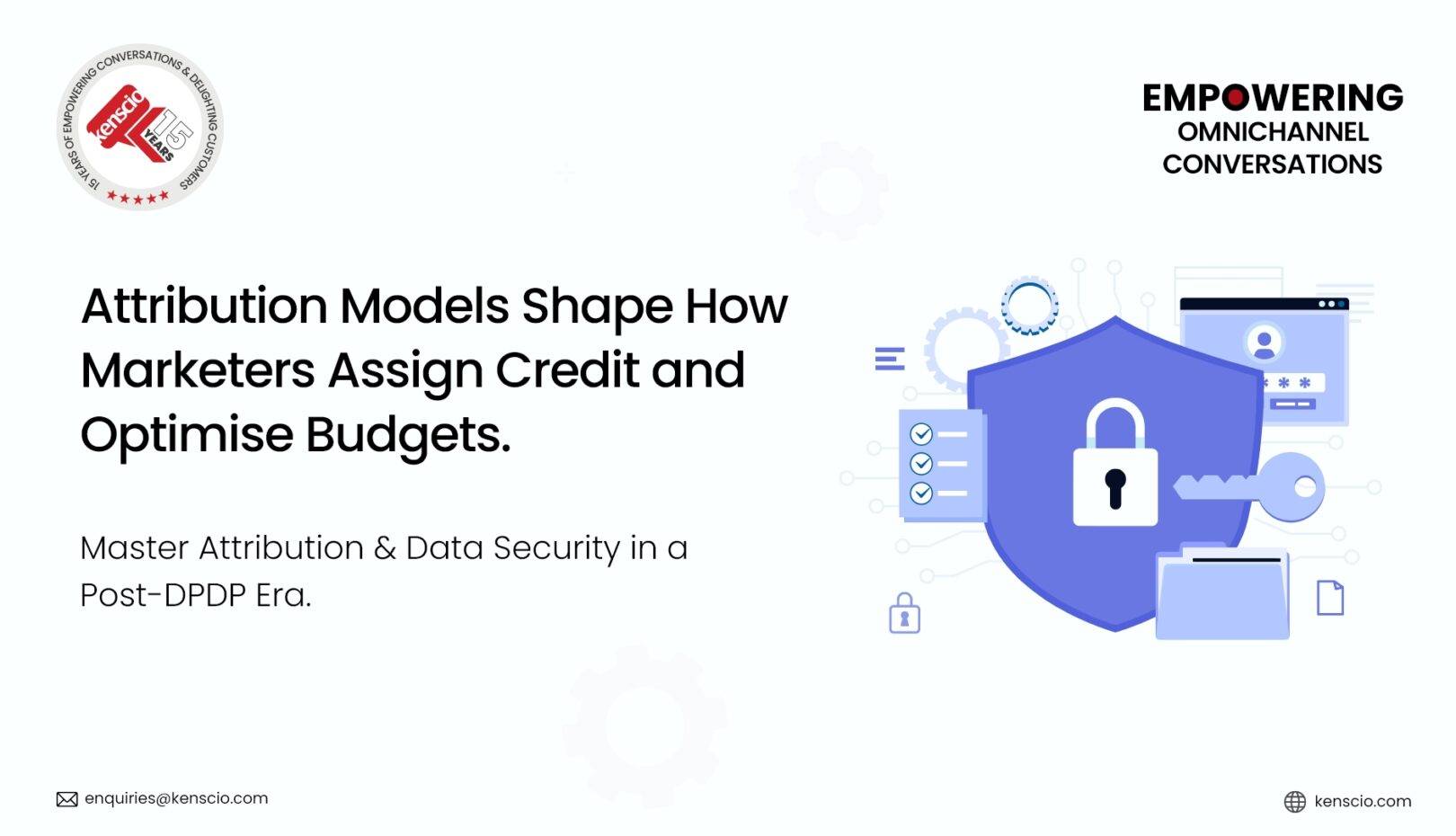- October 15, 2025
- by Subhash N
Marketing Attribution Models and Data Integrity Risks
Common Attribution Models
- Last-click attribution: Credits the final touchpoint before conversion. It’s simple and widely used, but often misleading — especially in multi-channel marketing, where a user might engage with multiple emails, WhatsApp messages, or web pages before converting.
- First-click attribution: Attributes conversion to the first interaction. This is useful for awareness campaigns, but it ignores the nurturing journey that multi-channel marketing excels at.
- Linear attribution: Distributes credit equally across all touchpoints. This model is fairer but can dilute the impact of high-performing channels.
- Time-decay attribution: Gives more weight to recent interactions. This works well for sequences where the final few messages or touchpoints drive action.
- Position-based attribution: Prioritizes first and last touchpoints, with some credit to the middle. It’s a balanced model that reflects the reality of multi-step funnels.
Data Integrity and Information Security Risks in Attribution
Attribution models are only as good as the data feeding them. And here’s where things get tricky — especially in India, where user behaviour, device diversity, and privacy expectations vary widely.
Here are some common data integrity and information security risks:
- Missing or corrupted data: Ad blockers, email client restrictions, and consent gating can prevent tracking pixels from firing. I’ve seen campaigns where open rates dropped overnight simply because Gmail started blocking images.
- Duplicate or inflated conversions: Poor deduplication logic can make one user look like five. This is especially common when tracking across email, web, WhatsApp, and app without unified IDs.
- Cross-device tracking gaps: A user might open an email on mobile, click a link on desktop, and convert on an app. Without proper stitching, attribution breaks down.
- PII leakage: Embedding personal identifiers in URLs — like email addresses or phone numbers — is a compliance nightmare under DPDP and GDPR. Yet I still see this happen in UTM parameters.
- Vendor-side discrepancies: Different tools report different numbers. Timestamp mismatches and session logic often cause this.
- Unsubscribed user attribution: If a user purchases a product and then unsubscribes, attribution must be handled carefully. Storing behavioural data without PII — using masked or hashed identifiers — ensures compliance while preserving analytical value.
- Improper data retention: Retaining user-level data beyond the permitted duration or without valid purpose violates both DPDP and GDPR.
- Insecure data pipelines: Attribution often involves syncing data across platforms. If these pipelines are not encrypted or access-controlled, they become vulnerable to breaches. Lack of audit trails: Attribution logic changes over time. Without proper logging and versioning, it’s hard to trace how credit was assigned, which is critical for compliance audits.
Mitigating Risks
So how do we fix this? Here are some strategies I’ve used and recommended to clients:
- Implement server-side tracking: Where feasible, shift tracking logic to the server. This reduces reliance on client-side pixels and improves data reliability.
- Use consent-aware analytics: Make sure your tracking respects user preferences.
- Audit attribution logic regularly: Don’t set it and forget it. Review your conversion paths, deduplication rules, and funnel definitions every quarter.
- Avoid embedding PII in URLs: Use secure tokens or hashed identifiers. This protects user privacy and keeps you compliant.
- Align vendor reporting standards: Sync timestamp formats, session definitions, and conversion windows across tools. This helps reconcile discrepancies.
- Mask identifiers post-unsubscribe: When a user opts out, mask or anonymize their identifiers while retaining behavioural data for aggregate analysis.
- Encrypt data pipelines: Ensure all data transfers between platforms are encrypted and access-controlled.
Maintain audit logs: Track changes to attribution logic and data handling policies to support compliance reviews.
The Indian Context
India’s digital ecosystem is unique. Users often switch between low-end smartphones and desktops, use multiple email addresses, and expect privacy without fully understanding consent flows.
The DPDP Act is a wake-up call. It mandates clear consent, purpose limitation, and data minimization. For multi-channel marketers, this means:
- No more pre-checked boxes for newsletter or WhatsApp opt-ins.
- Clear disclosures on what data is collected and why.
- Easy opt-out mechanisms in every message, across channels.
Platforms are adapting fast, but marketers must do their part. Attribution must evolve from a technical exercise to a compliance-aware strategy.
Attribution in Practice
Final Thoughts
Attribution is powerful — but only when built on clean, compliant, and secure data. In India, where privacy norms are evolving and user behaviour is complex, marketers must balance insight with integrity.
If you’re running multi-channel campaigns, take a hard look at your attribution setup. Choose the right model, fix your data pipelines, and stay compliant. Your conversions and your reputation depend on it.
